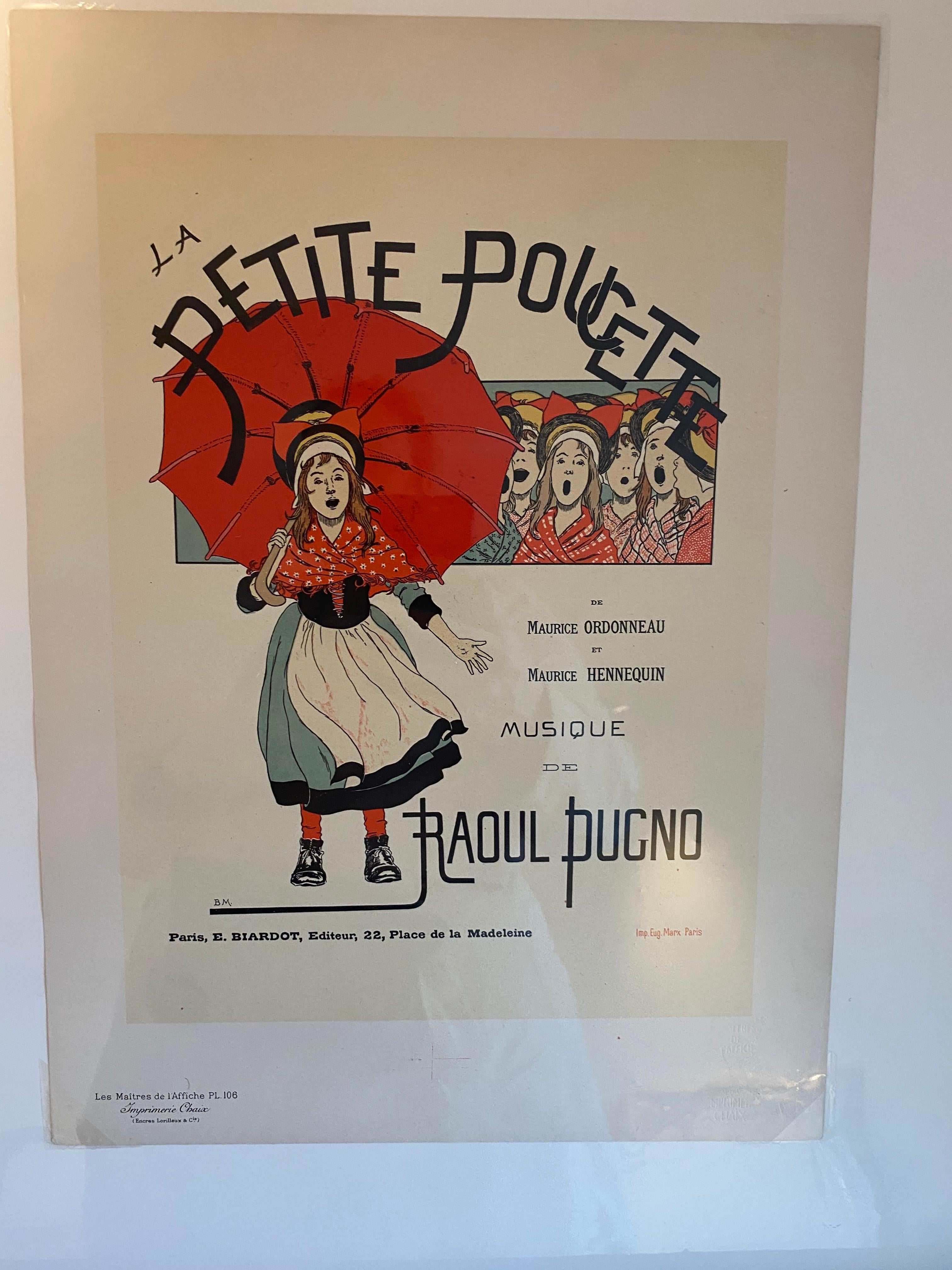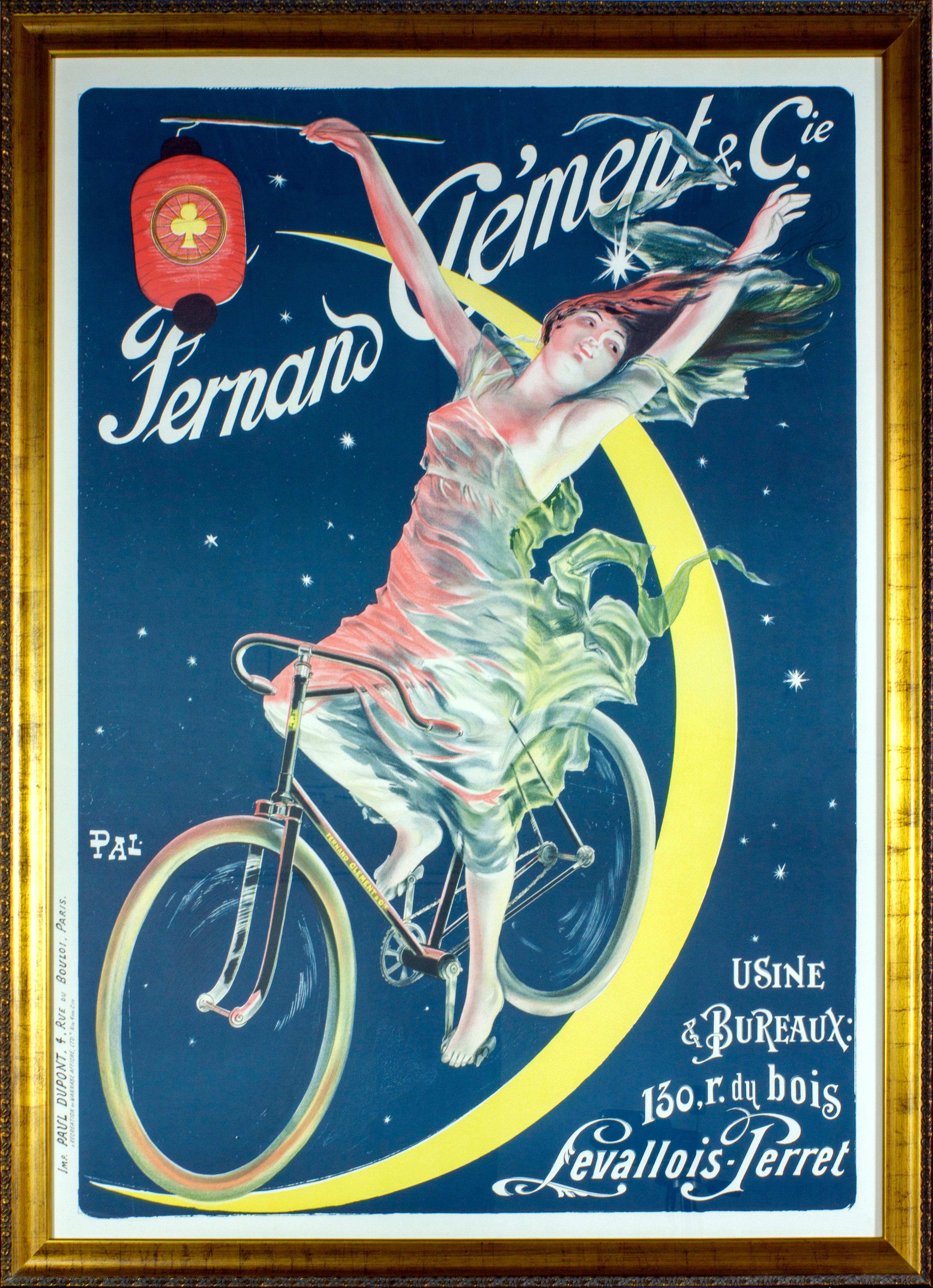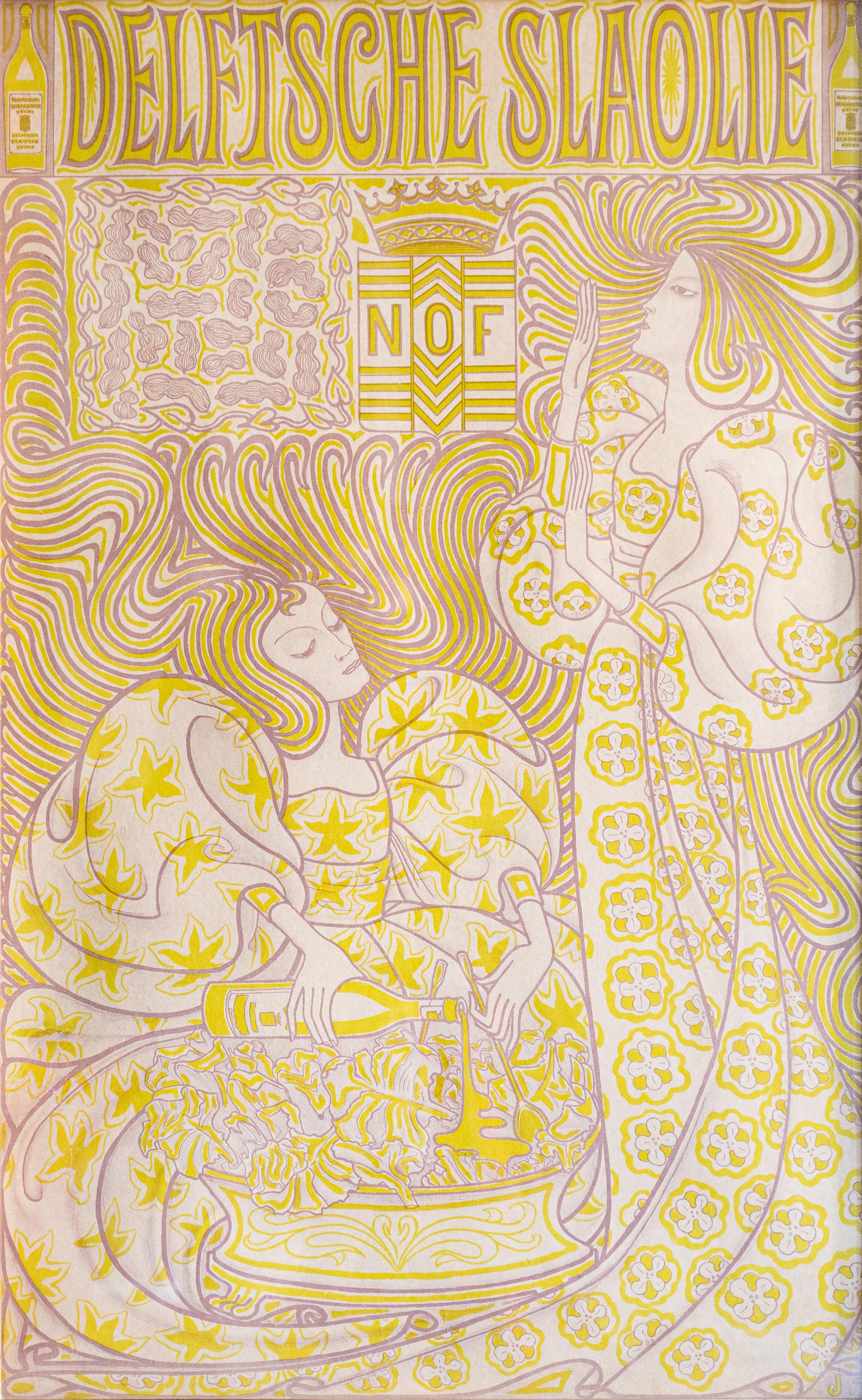Items Similar to The Crying Women - Original Lithograph by Ferdinand Bac - 1922
Want more images or videos?
Request additional images or videos from the seller
1 of 2
Ferdinand BacThe Crying Women - Original Lithograph by Ferdinand Bac - 19221922
1922
About the Item
The Falling Woman is an original modern artwork realized by Ferdinand Bac (1859 - 1952) in 1922.
Signed and dated on plate on the lower left corner: F. Bac 1922.
Original Lithograph on ivory paper.
Perfect conditions.
The Falling Woman is an excellent Liberty artwork realized by Ferdinand Bac. The work is in full Liberty style and depicts a woman at the center of the scene covered by a transparent veil supported by a young man with thick hair. Around them other figures can be glimpsed: an elderly man on the left side, two women with veiled heads and another man on the lower right corner. The scene, although dramatic, is of extreme quality and elegance.
This work has been realized the French artist Ferdinand Bac (1859 - 1952). Ferdinand-Sigismond Bach, known as Ferdinand Bac was a French cartoonist, artist and writer, son of an illegitimate nephew of the Emperor Napoleon. As a young man, he mixed in the fashionable world of Paris of the Belle Époque, and was known for his caricatures, which appeared in popular journals. He also traveled widely in Europe and the Mediterranean. In his fifties, he began a career as a landscape gardener. He attended Adolphe Thiers, Gambetta, Richard Wagner, Victor Hugo, Taine, Villiers de L'Isle-Adam, Paul Verlaine, Maurice Barrès, Barbey d'Aurevilly, Alphonse Daudet, Guy de Maupassant, Verdi, Gounod, Pierre de Nolhac, and many more other famous people of the time. He established himself as one of the first cartoonists and caricaturists of his time, as famous as Albert Robida, Job, Sem, Jean-Louis Forain or Caran d'Ache. Ferdinand alternated between Colombières and a beautiful mansion in Compiègne that also belonged to the Ladan-Bockairys. There he met Marcel Proust, Jean Cocteau, Gabriele D'Annunzio and Anna de Noailles. Until the end of his life, Ferdinand Bac continued to travel, write and draw, reflecting on the political and historical development of the world.
- Creator:Ferdinand Bac (1859 - 1952)
- Creation Year:1922
- Dimensions:Height: 7.49 in (19 cm)Width: 5.52 in (14 cm)Depth: 0.04 in (1 mm)
- Medium:
- Movement & Style:
- Period:
- Framing:Framing Options Available
- Condition:Insurance may be requested by customers as additional service, contact us for more information.
- Gallery Location:Roma, IT
- Reference Number:
About the Seller
4.9
Platinum Seller
These expertly vetted sellers are 1stDibs' most experienced sellers and are rated highest by our customers.
1stDibs seller since 2017
6,693 sales on 1stDibs
Typical response time: 2 hours
- ShippingRetrieving quote...Ships From: Grasse, France
- Return PolicyA return for this item may be initiated within 14 days of delivery.
More From This SellerView All
- The Republic of the Transvaal-Lithograph by Adolphe Willett - 19th centuryBy Adolphe WilletteLocated in Roma, ITThe Republic of the Transvaal is an original lithograph realized by Adolphe Willette (1857-1926) during the 19th century. The original work is united to ...Category
19th Century Art Nouveau Figurative Prints
MaterialsLithograph
- A Little Poor Woman - Lithograph by Adolphe Willette - 20th CenturyBy Adolphe WilletteLocated in Roma, ITA Little Poor Woman is an Original Lithograph realized by Adolphe Léon Willette ( 1857-1926). Good condition included a cardboard passpartout (65x50 cm). Hand-signed by the artist ...Category
Early 20th Century Art Nouveau Figurative Prints
MaterialsLithograph
- Praying Mucha - Lithograph by Adolphe Willette - Early 20th CenturyBy Adolphe WilletteLocated in Roma, ITPraying Macha is an Original Lithograph realized by Willette (Adolphe Léon). Good condition on a yellowed paper. Hand signed withpencil on the lower left corner. Adolphe Léon Wil...Category
Early 20th Century Art Nouveau Figurative Prints
MaterialsLithograph
- Risks and Temptations - Lithograph by Adolphe Willette - Early 20th CenturyBy Adolphe WilletteLocated in Roma, ITRisks and Temptations is an Original Lithograph realized by Willette (Adolphe Léon). Good condition on a yellowed paper. Hand signed with blue pencil on the lower left corner. Ad...Category
Early 20th Century Art Nouveau Figurative Prints
MaterialsLithograph
- Dangerous Jokes - Lithograph by Adolphe Willette - Early 20th CenturyBy Adolphe WilletteLocated in Roma, ITDangerous Jokes is an Original Lithograph realized by Willette (Adolphe Léon). Good condition on a yellowed paper. Hand signed with blue pencil on the lower left corner. Adolphe ...Category
Early 20th Century Art Nouveau Figurative Prints
MaterialsLithograph
- A Little Poor Woman - Lithograph by Adolphe Willette - 20th CenturyBy Adolphe WilletteLocated in Roma, ITA Little Poor Woman is a Lithograph realized by Adolphe Léon Willette ( 1857-1926). Good condition included a cardboard passpartout (65x50 cm). Hand-signed by the artist on the low...Category
Early 20th Century Art Nouveau Figurative Prints
MaterialsLithograph
You May Also Like
- "Hippodrome des Art", Maitre de l'affiche lithographBy François DuyckLocated in Hinsdale, ILDUYCK, EDOUARD (1872 -1897) CRESPIN, ADOLPH (1859 –1944) "Hippodrome des Art" Original lithograph from "Les Maitres de L'Affiche" series Printed by Imprimerie Chaix, Paris Bearing MDL stamp lower right, from issue #6, 1894. Plate #28 Unframed Size:11 3/8 x 15 3/4” The "Les Maitres de l'Affiche" series was offered as a subscription series to collectors every month for 60 months, from December 1895 through November 1900. The "Maitres de l'Affiche," were issued as separate numbered sheets, referred to as "plates". They were numbered, with the printers name "Imprimerie Chaix," in the margin at the bottom left hand corner, "PL.1" to "PL.240." In the margin at the bottom right hand corner of each, is a blind embossed stamp from a design of Cheret's. The smaller format and the fact the "Maitres" were a paid subscription series, allowed Imprimerie Chaix to use the latest state of the art printing techniques, not normally used in the large format posters due to cost. A very high quality of paper was used, where as the large format posters were printed on lesser quality newsprint, due to cost and a short expected life span. This explains why the quality of the printing, in the "Maitres de l'Affiche," usually far exceeds that of their larger counterparts. "...Posters were created by the team of Duyck & Crespin, whose close collaborative efforts garnered them the nickname 'the Siamese twins.' Between their first joint attempt at poster-making in 1885-1886 and Duyck's death in 1897, the duo produced a large corpus of works... as well as set designs and costumes for the theatre " (Brussels p.76) This is a Belgian poster for the Ferme de Frahinfaz, on the Hippodrome des Art road near Spa. "Accommodations for riders and pedestrians. Fork and knife lunches, fresh milk, real "Faro" beer from Brussels and English beers"Category
1890s Art Nouveau Figurative Prints
MaterialsLithograph
- "La Petite Poucette" from Les Maitres de l'AfficheBy Bernard Boutet de MonvelLocated in Hinsdale, ILDE MONVEL, BOUTET (1859 - 1927) "La Petite Poucette" Original lithograph from “Les Maitres de L’Affiche” series Printed by Imprimerie Chaix, Paris Bearing MDL stamp lower right, from issue #27, 1898. Plate #106 Unframed Size: 11 3/8 x 15 3/4” The “Les Maitres de l’Affiche” series was offered as a subscription series to collectors every month for 60 months, from December 1895 through November 1900. The “Maitres de l’Affiche,” were issued as separate numbered sheets, referred to as “plates”. They were numbered, with the printers name “Imprimerie Chaix,” in the margin at the bottom left hand corner, “PL.1” to “PL.240.” In the margin at the bottom right hand corner of each, is a blind embossed stamp from a design of Cheret’s. The smaller format and the fact the “Maitres” were a paid subscription series, allowed Imprimerie Chaix to use the latest state of the art printing techniques, not normally used in the large format posters due to cost. A very high quality of paper was used, where as the large format posters were printed on lesser quality newsprint, due to cost and a short expected life span. This explains why the quality of the printing, in the “Maitres de l’Affiche,” usually far exceeds that of their larger counterparts. Boutet de Monvel...Category
1890s Art Nouveau Figurative Prints
MaterialsLithograph
- "Bénédictine" Original 1898 Lithograph, Alphonse MuchaBy Alphonse MuchaLocated in Chicago, ILPublished by F. Champenois, Paris. "Bénédictine shows two girls pressing flowers amid book leaves, to remind us of the herbs that go into making the liqueur; the bottom part of the poster has a panorama of the Fecamp Abbey where the drink originated. Around 1510, one of the monks, Dom Bernardo Vincelli, prepared a liqueur using local wine and native herbs found in nearby woods, together with a few imported ingredients including muscat, ginger, clove and cardamom" (Wine Spectator, 70). As with all poster this size, the lithograph was made, in color, on two panels and joined at the center. Alphonse Mucha was a painter and decorative artist best known for the sensual Art...Category
1890s Art Nouveau Figurative Prints
MaterialsLithograph
- "Fernand Clement & Cie" lithograph print poster by Pal (Jean de Paléologue)By Pal (Jean de Paléologue)Located in Boca Raton, FL"Fernand Clément & Cie" framed lithograph poster by Pal (Jean de Paléologue.) Inscription on side reads Imp. Paul Dupont, 4 Rue du Bouloi, Paris. Recreation 84 Wannabe Affiche, Ltd. ...Category
1890s Art Nouveau Figurative Prints
MaterialsLithograph
- Delftsche SlaolieBy Jan TooropLocated in Chicago, ILJan Toorop was born in Java, studied in Holland and then spent three key years in Brussels, where he was a member of the circle of artists, "Les XX," during which time he befriended ...Category
1890s Art Nouveau Figurative Prints
MaterialsLithograph
- Fromme's Kalender Art Nouveau Lithograph Poster Koloman Moser Vienna SecessionBy Koloman MoserLocated in Chicago, ILLithograph printed by Albert Berger, Vienna. This design "was considered very advanced in 1899, with its large scale portrayal of the motif and the almost complete renunciation of interior drawing. The silhouette of the body is in mysterious contrast to the realistically portrayed head and hands. The unwavering gaze of the woman underlines the symbolism of the design: the Norn [ancient Norse goddess of fate] with the hour-glass and snake-ring embodies the eternal circle of life and the running out of time" (Vienna Secession, Denscher, p. 45). As the poster was originally used in 1899, the waning sand in the hourglass quite naturally can be assumed to be the coming of the end of the century. KOLOMAN MOSER: Instead of applying his flair and art education to paintings, Koloman Moser embodied the idea of Gesamt Kunstwerk (all-embracing art work) by designing architecture, furniture, jewelry, graphics, and tapestries meant to coordinate every detail of an environment. His work transcended the imitative decorative arts of earlier eras and helped to define Modernism for generations to come. Moser achieved a remarkable balance between intellectual structure (often geometric) and hedonistic luxury. Collaborating with Gustav Klimt and Josef Hoffmann, the artist was an editor and active contributor to Ver Sacrum, (Sacred Spring), the journal of the Viennese Secession that was so prized for its aesthetics and high quality production that it was considered a work of art. The magazine featured drawings and designs in the Jugendstil (Youth Style) along with literary contributions from distinguished writers from across Europe. It quickly disseminated both the spirit and the style of the Secession. In 1903 Moser and Hoffmann founded and led the Wiener Werkstatte (Viennese Workshop) a collective of artisans that produced elegant decorative arts items, not as industrial prototypes but for the purpose of sale to the public. The plan, as idealistic then as now, was to elevate the lives of consumers by means of beautiful and useful interior surroundings. Moser’s influence has endured throughout the century. His design sensibility is evident from the mid-century modern furniture of the 1950s and ‘60s to the psychedelic rock posters...Category
1890s Art Nouveau Figurative Prints
MaterialsPaper, Lithograph





